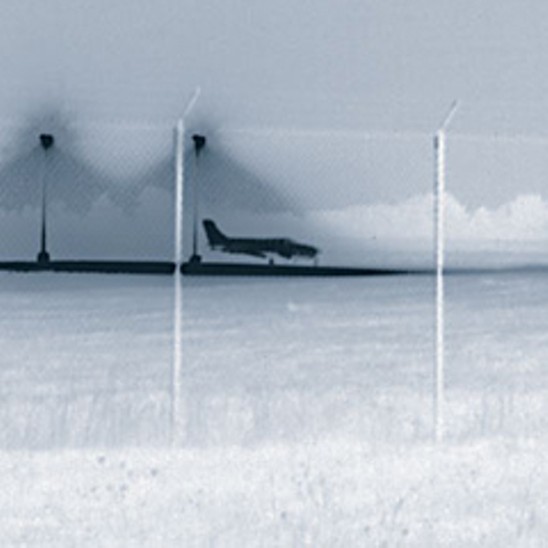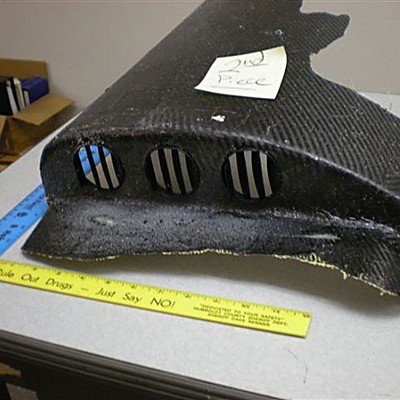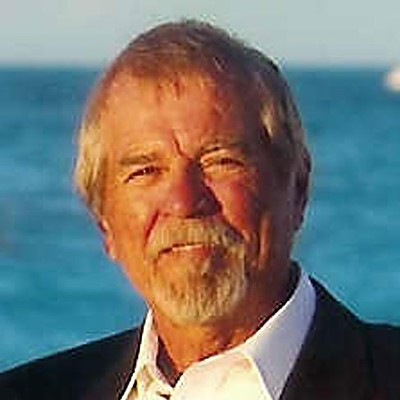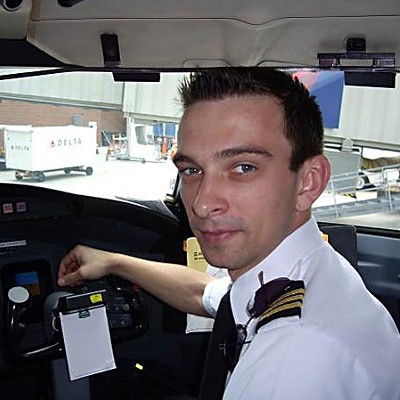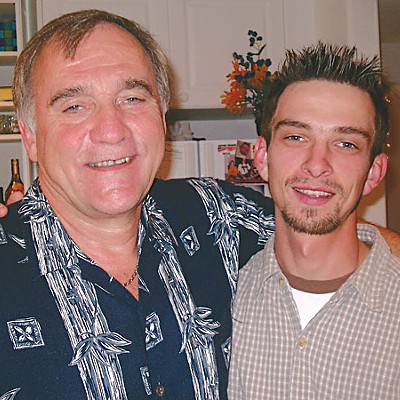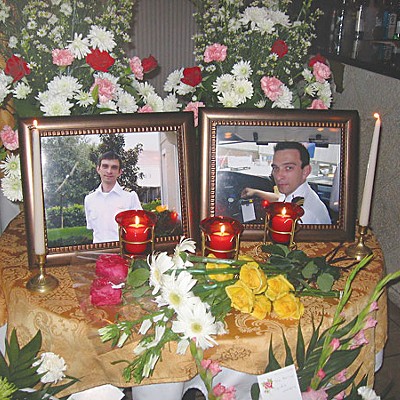The Plane That Wasn't There
How a mistaken report at the Arcata-Eureka Airport may have cost two men their lives
By Ryan Burns [email protected] @RyanBurnsy[
{
"name": "Top Stories Video Pair",
"insertPoint": "7",
"component": "17087298",
"parentWrapperClass": "fdn-ads-inline-content-block",
"requiredCountToDisplay": "1"
}
]
Vladislav Milushev wanted to see the redwoods.
The young pilot and flight instructor was picking out destinations for a cross-country airplane trip with Rick Gustafson, a friend of a friend who wanted to learn how to fly. At 60, Gustafson still longed for adventure, whether it was skydiving, riding his Harley or just cheering for his beloved Miami Dolphins. For his latest adventure, Gustafson suggested that he and Milushev fly across the country, from Plant City, Fla., to either Las Vegas or Reno. But Milushev's stepfather, himself a retired Delta captain and ex-Navy pilot, said that was too dangerous. He didn't want Vladek, as Milushev's family called him, navigating through the thin air of the rockies.
So Milushev chose another destination. "You know what?" he said. "I've never seen those big trees you can drive through." At 30, he'd already seen more of the world than most folks. As a child, he and his parents fled the fallout of Chernobyl, moving from Belarus to Poland. When he was 17, he and his mother followed missionaries to Nashville, Tenn. His current home was in a suburb of Orlando, Fla. But he'd never been to the Pacific Northwest. Gustafson had. He said it was beautiful.
Which is how it happened that in the late-night hours of March 1, with rain and wind gaining strength off the coast, Milushev and Gustafson found themselves approaching the Arcata-Eureka Airport in a rented Diamond DA-40, a lightweight, single-prop four-seater being mercilessly tossed about in the escalating storm. Through radio static, Milushev complained to the Seattle-based Air Traffic Control operator: "It's really turbulent right now."
At just below 4,000 feet, Milushev, following the controller's instructions, switched his radio over to the local common traffic advisory frequency, where approaching pilots communicate with one another. (The local airport has no control tower of its own.) The Seattle controller, now unable to reach Milushev, then watched with concern as over the next 15 minutes the plane dropped lower and lower, sinking well below the minimum crossing altitude for a runway approach. Multiple times, the controller tried to reestablish radio contact, to no avail. He called Air Traffic Control in Oakland and asked them to try Milushev on the radio -- also unsuccessful. Finally, he summoned his supervisor, and together they watched as three radar sweeps showed the airplane moving south-southeast toward the jagged coast, less than a mile from Trinidad Head and a mere 100 feet above the surface of the sea. The airport runway lies at 221 feet.
And then the plane disappeared.
What happened next remains unclear despite investigations by the Coast Guard, the Humboldt County Department of Public Works and the National Transportation Safety Board, not to mention scrutiny by the friends and families of both Milushev and Gustafson. What's known is that shortly after the plane disappeared, Humboldt County Airports Manager Jacqueline Hulsey told the Seattle Center supervisor that the plane had landed safely at the Arcata-Eureka Airport when, in fact, it had crashed into the ocean six-and-a-half miles away. This erroneous report, along with an unexplained delay the following morning, postponed search and rescue efforts by more than 12 hours. The families of Milushev and Gustafson believe that lapse could have meant the difference between life and death.
Four days after the crash, debris was found on the shore between Patrick's Point and Agate Beach. Of the 12 pieces of airframe eventually recovered, the largest was a ragged slice of wing skin measuring seven feet long and nine inches wide. Searchers also found one of the two front seat cushions and a small chunk from the baggage compartment with a data tag that was used to identify the debris. The remains of the two men have not been found.
In September, the NTSB released a report on the incident, and the information shines a harsh light on local airport personnel, though it fails to illuminate exactly how the mistake was made that night. More than nine months later, the families of Milushev and Gustafson are struggling with grief, confusion and anger. They've held memorial services, they've seen the men's names engraved on the Trinidad lighthouse plaque honoring those who've been lost at sea, and they've tried to move on with their lives. But they're haunted by the thought that it's possible, however unlikely, that the men survived their plummet into the sea, only to be left to die in the cold, choppy water -- perhaps injured and frightened -- because of a mistake for which they've received no explanation, and no apology.
Milushev's stepfather, Richard Collier, doesn't consider himself a stepfather but rather a father to the fallen pilot. He met Milushev's mother, Larissa Luneva, online in 1990, and married her in 2001. At that point, he said in a recent phone interview from his Florida home, "Vladek became my son." Collier described Milushev as loving, caring and very motivated. Fluent in Russian, Polish and English, Milushev eventually chose to follow in the footsteps of Collier and his two sons from a previous marriage -- all pilots. After graduating from a Delta connection flight academy, Milushev became an instructor and, later, a commercial pilot for Delta regional carrier Comair. "His dream in life," Collier recalled, "was to be a FedEx pilot, so he could fly to Russia and Belarus and fly all around the world."
When Rick Gustafson asked if he'd like to fly across the country, Milushev agreed. After just a few hours on the phone and Internet Friday, Feb. 27, he managed to find a plane available to lease the following morning. At 8 a.m. Saturday, Milushev and Gustafson arrived at the tiny Plant City Municipal Airport, 20 miles east of Tampa. Milushev completed a rental agreement, paid a $1,000 security deposit and went through his ground and in-flight checkout procedures. By 11 a.m. they were airborne, racing the sun to the western horizon. After a short stop in Mobile, Ala., the men continued on to Huntsville, Texas, roughly 70 miles north of Houston, touching down at 7:20 p.m. CST. As an airport employee refilled the plane's tank with 39 gallons of 100-weight low-lead aviation fuel, Milushev told him that they wanted to continue on that night. But both men were tired, and they soon reconsidered. The owner of Huntsville Aviation drove them to a nearby hotel, and the men ate at the restaurant next door before turning in.
At 7:00 the next morning -- March 1, the day of the crash -- the first employee to arrive at Huntsville Municipal Airport found Milushev and Gustafson already there, performing their pre-flight inspection. Fifteen minutes later they were taxiing for takeoff. In Sedona, Ariz., that afternoon, Milushev called home and spoke with his mom. She was concerned about him: Had he eaten? Yes, he assured her, he was eating right now, in fact. The conversation was brief -- "He was always in a rush," Collier said -- and turned out to be their last.
They left Sedona at 5:30 p.m. MST and continued their marathon hopscotch westward, flying past Palmdale, Calif., the destination listed on their flight plan, to arrive at Meadows Field in Bakersfield at 6:41 p.m. Pacific Standard Time -- almost 35 hours since they'd departed Florida. Less than an hour later they were in the sky once more, headed north with a full tank of fuel and a route clearance directly to Arcata.
With the irrational guilt that often accompanies the death of a loved one, Collier blames himself for not somehow finding a way to discourage his son from leaving Bakersfield that night. "I have to live with that," he said. "I cautioned him. I pleaded with him to call me. But he's a young man, and he's well qualified, and I didn't get a chance to ... ." Here his voice broke. Gathering himself, he continued. "If I'd been in the airplane with him it wouldn't have happened."
Just after 10 p.m., Milushev contacted the Federal Aviation Administration's Oakland Flight Watch station to ask about reports of turbulence he'd been overhearing. The flight watch briefer gave him the conditions in Arcata: light rain, winds at 10 knots, gusting to 20. As they continued north the weather worsened, and Milushev, switching frequencies from Oakland to Seattle, reported intense turbulence on multiple occasions. Following the approach pattern of other northbound pilots that night, Milushev flew beyond the Arcata-Eureka Airport and out over the ocean before doubling back for an RNAV, or instrument-guided, approach to runway 14 -- the longer of the airport's two criss-crossing runways.
Radar data shows that, in the flight's final nine minutes, the plane lost altitude steadily at about 500 feet per minute. No emergency transmissions were received from Milushev or the plane's emergency locater transmitter. The elapsed time between takeoff in Plant City, Fla., and impact off the coast of Trinidad was 39 hours, of which Milushev had spent nearly 28 on-duty and 23 in flight.
Humboldt County Airports Manager Jacqueline Hulsey was at home when she received the call from the Seattle Center supervisor. He told her that plane number N521DS had been lost from radar, and he asked her to check for the missing "Diamond jet" (the plane was not, in fact, a jet) and call him back. About five minutes later, he realized his mistake and called Hulsey again. During this second conversation, according to the National Transportation Safety Board's report, Hulsey told him that the plane was safely on the ground at the Arcata-Eureka Airport.
"N521DS is on the ground?" he asked.
"Yes," Hulsey replied.
So the supervisor closed out Milushev's flight plan. Between the two calls from Seattle, Hulsey had spoken, at least once, with Tom Sobehrad, the airport service worker on duty that night. Somewhere in that five-minute window was the moment where the mistake was made. Whether Sobehrad thought he saw the plane and made a faulty report or Hulsey misheard or misinterpreted what he said remains unknown.
"[D]ue to significant conflicts in their written and oral statements," the NTSB report reads, "the content of their phone conversation could not be positively determined." Kurt Anderson, the NTSB's investigator in charge, found that Hulsey and Sobehrad disagreed on just about everything that occurred during those five minutes, including what exactly she asked him to do, whether she mentioned that the plane had been lost from radar (and that it was not a jet), whether she gave the airplane's full registration number and whether he (Sobehrad) was supposed to call Hulsey back. They didn't even agree on how many times they'd talked on the phone.
When the Journal asked Anderson if, in the course of his investigation, he got the impression that one or the other was lying, he replied, "We don't do impressions. We only do objective information."
In the airport log book that night, Sobehrad made the following entry:
"J.H. called @ 11:15 p.m. -- asked me to locate pilot who just landed to call Seattle Center to cancel [close out] flight plan. The plane and pilot were nowhere to be found." (Reached by phone last week, Sobehrad referred all questions to Hulsey, who the Journal has been unable to reach. More on that later.)
Regardless of the reason, once the false report had been made to Seattle the Federal Aviation Administration was absolved of any responsibility for the ensuing delay in search and rescue efforts, said FAA spokesman Ian Gregor. "Any system relies on accurate information. So if we call an airport manager and [s]he says, 'Yeah, [the plane] is here... .'" Gregor left it at that.
Airport professionals say "N-numbers," or registration numbers, get mixed up all the time. "Believe it or not, that's kind of a common occurrence," said Mac McCall, an accredited airport executive and safety expert based in Sedona, Ariz. "Just here the other day we had two Canadian airplanes on the ground -- two license numbers apart -- and we fueled the wrong airplane." It's also fairly routine, he added, for pilots to forget to close out their flight plans. (Pilots must close out, or "cancel," their flight plan once they land.)
Humboldt County Director of Public Works Thomas Mattson agreed. "This happens on a regular basis, where we get a call [about] a missing airplane, and 99.99 percent of the time it's [because] the pilot didn't follow up with the flight plan." Not that such frequency should affect procedure, Mattson said. "In a situation like this, you have to make the assumption that the plane is down, no matter what the history says."
Until 1997, the Arcata-Eureka Airport had a manned flight service station on-site, which allowed air traffic control specialists to monitor landings and communicate directly with pilots. KIEM-TV Meteorologist Jim Bernard served locally as an FAA-certified air traffic controller for roughly 20 years and says eliminating the service station increased risk for incoming pilots. "What you lost was the local immediacy of a human failsafe on the ground," he said. Airport service workers are on the ground, but their duties are more limited and their job requirements less restrictive than those of air traffic controllers.
The NTSB has yet to release its final report, which will outline the accident's probable cause. But Collier thinks he know what it will say. He believes the weather conditions that night were simply beyond his son's capabilities, especially at the end of an 18-hour travel day. And he said the chances that Milushev and Gustafson survived the crash are slim, but not impossible. Gustafson's family agrees.
"There's no way to know if they actually died instantly and whether the search ... could have saved them," Judi Gustafson, Rick's wife, said recently from her home in Casselberry, Fla. "But she [Hulsey] never gave them a shot."
U.S. Coast Guard Lt. Russel Merrick told the Journal in March that, with local ocean temperatures of around 50 degrees, survivability in street clothes would have been somewhere between two and three hours. He also said that, if notified of the missing plane that night, search and rescue personnel could have been on the scene within minutes. Instead, Hulsey arrived at the airport the following morning and was told by a service worker that the plane and pilot had not been located. At 9 a.m., Hulsey called the Seattle Center and informed them that the plane was missing and may never have landed. The Humboldt County Sheriff's Department received a call from the California State Office of Emergency Services at 11 a.m., more than two hours after Hulsey learned that the plane was missing and 12 hours since it disappeared from radar.
The Sheriff's Department initiated a search that would last for days, with pilots from U.S. Coast Guard Group Humboldt Bay scouring the coast while ground personnel combed the shore for debris. Searchers used sophisticated models of wind, tides and surface currents to predict likely spots for landfall. On March 3, the families of the missing men arrived in Humboldt County. Milushev's stepfather, mother and grandparents came, as did Gustafson's wife and adult daughter, Sheila Jenkins. They were all briefed by Coast Guard personnel and shown the spot where the plane likely went down, and over the next two days they were updated on every aspect of the search and rescue efforts.
When the search was finally called off, Collier understood. "I was satisfied they did everything they could possibly do to find my son," he said.
However, both families still had unanswered questions. Gustafson's wife and daughter, still in shock, went to the airport later that week, hoping to move their flight home up a day. Once there, they decided to ask the airport manager exactly what happened that night and what, if any, disciplinary actions were being taken. A secretary took their names and left to retrieve Hulsey, but when the secretary returned, Judi Gustafson recalled, she said that Hulsey had left for the day. They asked if she could be reached by cell phone and were told she'd left her cell phone behind and, anyway, the battery was dead. They asked if Hulsey was available later in the week and were told that her schedule was unpredictable.
The Journal has repeatedly attempted to reach Hulsey for comment, in March and numerous times over the past two weeks, leaving voicemails and messages with airport personnel. She has not returned the calls, though doing so -- responding to questions and concerns from the public -- is specifically listed as a duty in her job description. Judi Gustafson said she sent Hulsey an e-mail from Florida and got no response. The silence, she said, has only fueled her anger. Jenkins, Gustafson's daughter, agreed, saying in an e-mail to the Journal that she remains dumbstruck by "the unprofessional attitude of Ms. Jacquelyn Hulsey, [who was] not even willing to face us and speak to us when we were in CA or to date for that matter."
Milushev's parents decided not to pursue contact with Hulsey. "My wife wanted to confront her," Collier said, "but I said I don't want to do that. [She] has to live with it, not us."
Mattson, who as director of public works serves as Hulsey's supervisor, was contrite when reached by the Journal. He explained that his department conducted an internal investigation following the incident and that "personnel actions" had been taken (he said he's legally prevented from revealing what those actions were). Both Hulsey and Sobehrad remain in the positions they held in March, but airport procedures have changed. There is now a dedicated cell phone that stays with whomever is on duty. It's used for direct communication with the FAA. When an aircraft disappears from radar, Mattson said, "We make the immediate assumption that plane is down and call everybody into action to find that plane." The search isn't called off, he said, until somebody positively identifies the plane and speaks with the pilot.
As for the events of March 1, Mattson said it was simply a communication breakdown. "Jackie thought she'd said certain things. [Sobehrad] thought he'd heard other things. Who knows which one is absolutely right?" Both feel awful about it, Mattson said. "This was a major tragedy, and they've taken it personally just as I took it personally. This is something that eats at you personally for a long, long time."
He understands the families' calls for accountability. "People need closure. We all do when something tragic like this happens. We all would like to say, this is exactly what happened and this is where the responsibility lies, etc. At this point the responsibility lies with our entire department," Mattson said, "me as the bottom line."
To date, the families of Milushev and Gustafson have not been contacted by any officials with the County of Humboldt, the FAA or the NTSB. Collier said he only learned that the NTSB had released its factual report because he did a Google search on the crash. When the Journal contacted Milushev's wife and daughter, they were unaware of the report. Reading it, Jenkins later wrote, "opened a can of hurt that you cannot imagine. ... I am VERY angry after reading the report over and over."
She and Judi Gustafson believe that Hulsey was clearly negligent. They haven't ruled out legal actions. "I would hate for any other family to have to go through this same thing," Judi Gustafson said. "It's the thing you never plan for. It's the thing that completely changes the course of your life. Until you go through it," she said, her voice jumping several octaves as she started to cry, "you don't understand the impact that the loss of somebody close has."
Shortly after her dad died, Jenkins found out she was pregnant. She's due any day. This year has left her emotionally drained, she said, but she believes everything happens for a reason and feels surviving will ultimately make her stronger. Her e-mail ended on a light note:
"Funny how life happens. I lost my Dad and became unexpectedly pregnant with a son who will soon come into this world as 'Brady Rick,' Brady being after Tom Brady, the quarterback of my all-time-favorite New England Patriots (Dad and I were always rivals since he loved the Dolphins) and Rick after Dad. I wonder what he would think of me mixing the two names together. LOL!!!"
Milushev's mother and stepfather remain in deep mourning, and the tragedy has only deepened. Thirty days after Milushev's death, his girlfriend, Brandi Montana, was killed in a car wreck on the way to his memorial. Milushev's mom can't help thinking about her son's body at the bottom of the ocean. She worries that fish are eating it. But her Russian Orthodox faith tells her he's not really gone. There's a spot for him at the family table and a candle burning in remembrance. Each night, they raise a glass to Vladek. Collier said he hopes that, if any good can come from this experience, it's that the people who made mistakes might learn from them. But he's not interested in revenge. "Nothing in this earth could heal the pain and bring him back to us," he said. "Regardless of mistakes that were made by people there, it's far from our mind. It's just a tragedy that we have to live with."
While still in Humboldt County, just after the crash, Milushev's family spent a day driving the Avenue of the Giants, stopping periodically to stand in those massive shadows and crane their necks skyward. In an online memorial photo album created in Milushev's honor, there are several photos from this day. One, posted by Larissa Collier, Milushev's mother, shows her own mother, Milushev's Russian grandma, standing at the edge of the damp, two-lane road, her arms reaching up longingly toward the mossy trunk of an ancient redwood. A Kleenex appears to be clenched in one outstretched hand, and her face is a portrait of pain. The caption, written by Larissa Collier and dated March 27, reads, "Avenue of the Giants in the Redwood forest Vladek wanted to see. We were his eyes."
Comments (25)
Showing 1-25 of 25
more from the author
-
Last Days of the Surfing DA
Heading into his final year in office, Paul Gallegos talks politics, family and The Smiths
- Jan 2, 2014
-
Unequal Opportunities
Behind the ACLU's allegations of racial, sexual and disability discrimination in local schools
- Jan 2, 2014
-
Systematically Misled
- Dec 26, 2013
- More »
Latest in News
Readers also liked…
-
Through Mark Larson's Lens
A local photographer's favorite images of 2022 in Humboldt
- Jan 5, 2023
-
'To Celebrate Our Sovereignty'
Yurok Tribe to host gathering honoring 'ultimate river warrior' on the anniversary of the U.S. Supreme Court ruling that changed everything
- Jun 8, 2023
